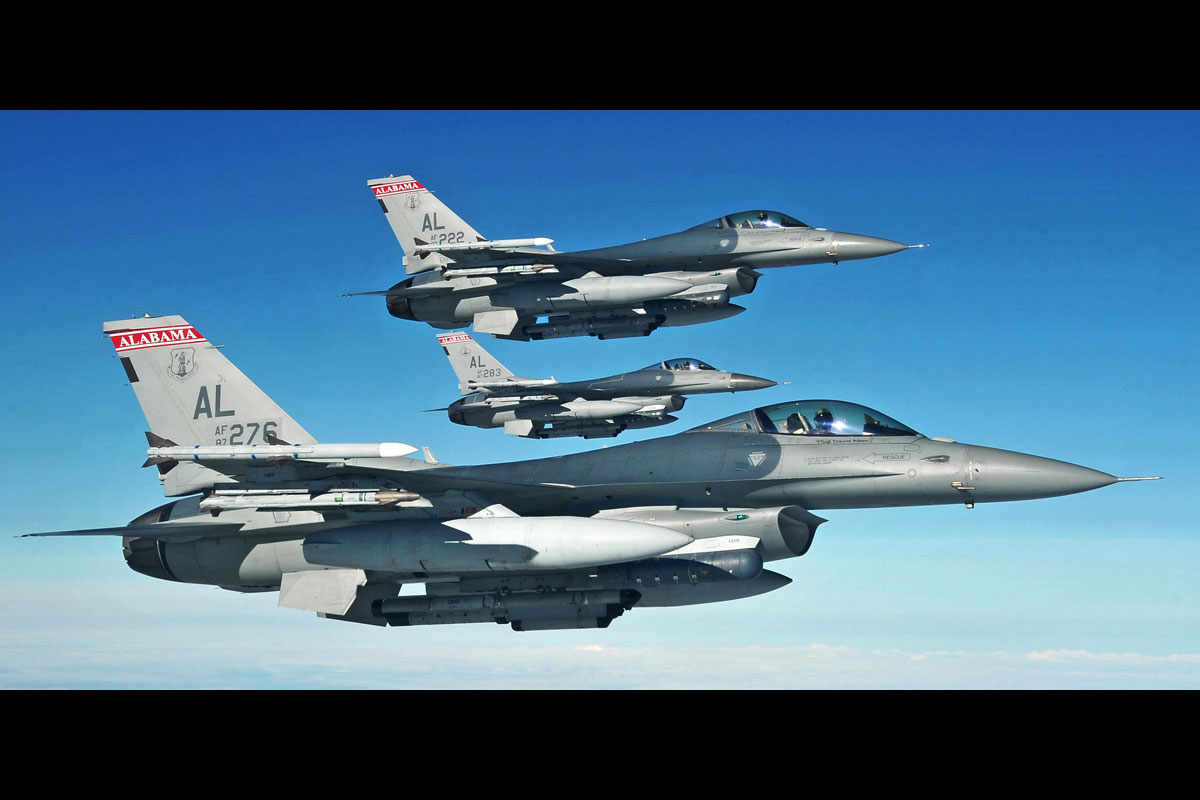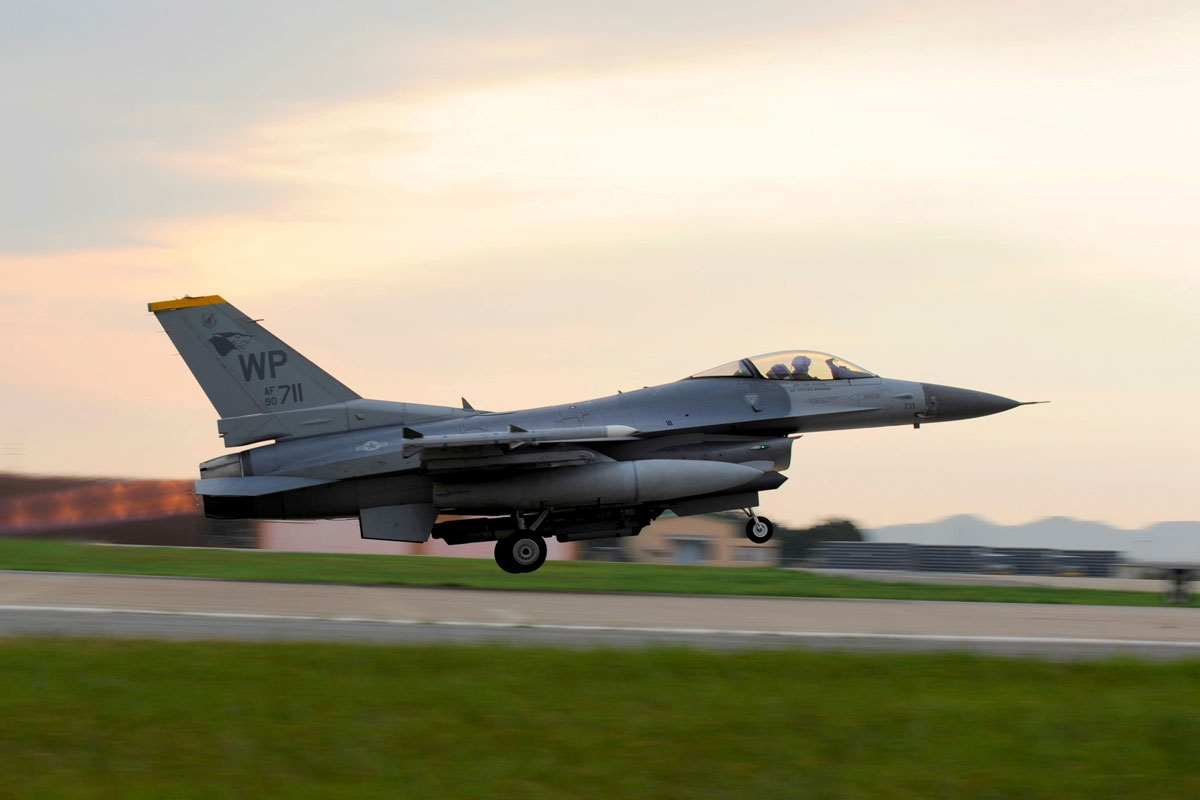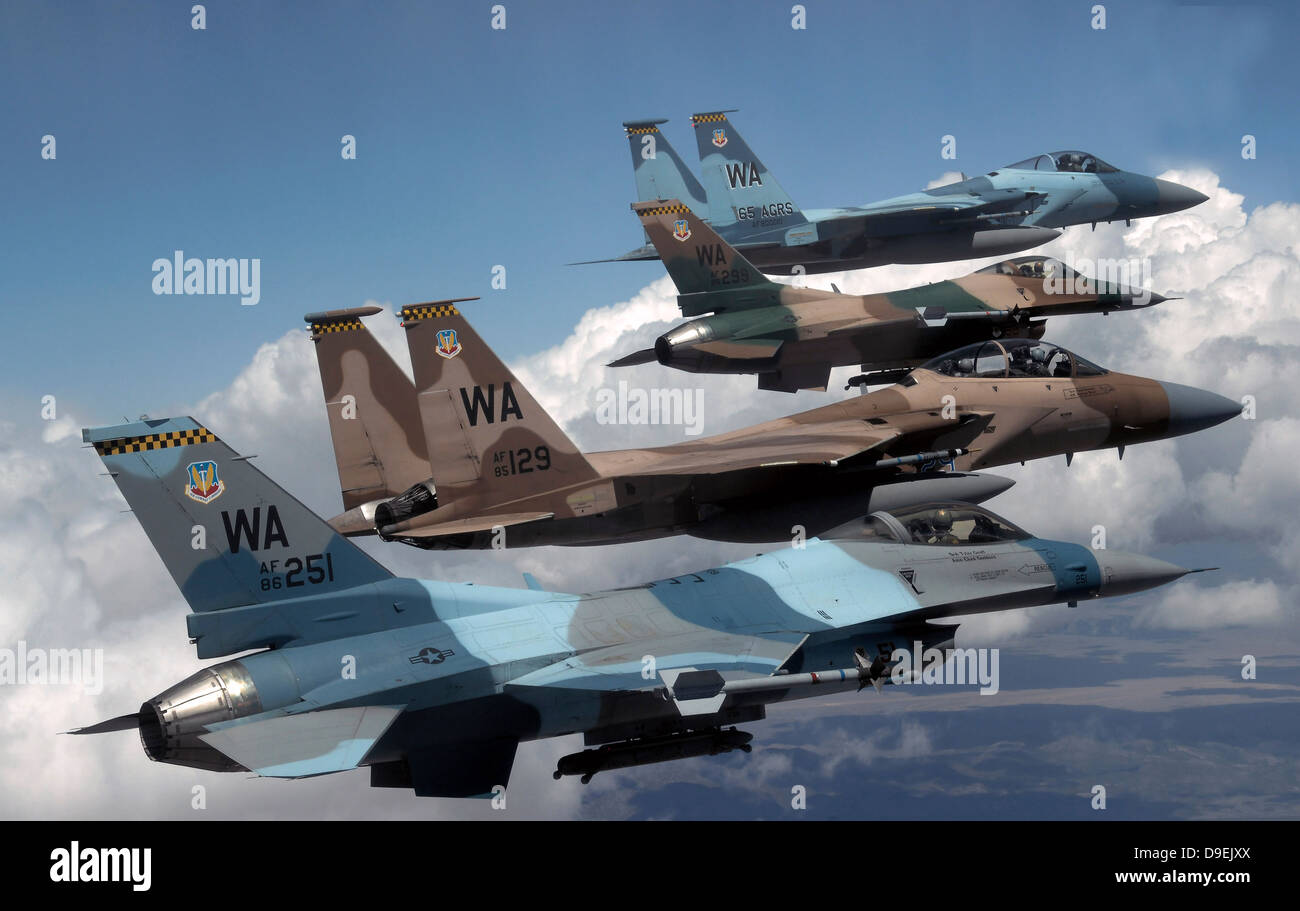F 15 Falcon - The McDonnell Douglas F-15 Eagle is an American twin-engine tactical fighter designed by McDonnell Douglas (now part of Boeing). After reviewing proposals, the United States Air Force (USAF) selected the McDonnell Douglas design in 1969 to meet the service's need for a dedicated air superiority fighter. The Eagle first flew in July 1972 and entered service in 1976. It is one of the most successful modern fighters with over 100 victories and no defeats in air combat, with most of the kills carried out by the Israeli Air Force.
The Eagle was exported to several countries including Israel, Japan and Saudi Arabia. The F-15 was originally conceived as an aircraft with pure air superiority. Its design included a secondary ground attack capability.
F 15 Falcon

Which was hardly used. The aircraft's design proved flexible enough to later develop an improved all-weather strike derivative, the F-15E Strike Eagle, which entered service in 1989 and was exported to several countries. Several other variants of the F-15 were produced.
Aircraft, General Dynamics F 16 Fighting Falcon, F15 Eagle Wallpapers Hd / Desktop And Mobile Backgrounds
The USAF planned to replace all of its air superiority F-15s with Lockheed Martin F-22s in 2010, but severely constrained F-22 procurement has forced the USAF to operate the F-15C/D in 2020. The F-15E Strike Eagle is expected to it will continue in service with the USAF until 2030. The F-15 remains in service with several countries, with production of improved variants still ongoing.
The F-15 can trace its origins to the beginning of the Vietnam War, when the US Air Force and US Navy battled each other over future tactical aircraft. Defense Secretary Robert McNamara pushed for the two forces to use as many joint aircraft as possible, even if doing so would compromise performance. As part of this policy, the USAF and Navy embarked on the TFX (F-111) program to provide the Air Force with a medium-range fighter that would also serve as a long-range fighter for the Navy. .
In January 1965, Secretary McNamara asked the Air Force to consider a new low-cost tactical fighter for short-range and close air support roles to replace several types such as the F-100 Super Saber and several light bombers in service. Several existing designs could fulfill this role; the Navy preferred the Douglas A-4 Skyhawk and the LTV A-7 Corsair II, which were pure strike aircraft, while the Air Force was more interested in the Northrop F-5 fighter with secondary strike capability. The A-4 and A-7 were more capable in the attack role, while the F-5 was less so, but could defend itself. If the Air Force chose a purely offensive design, the priority for the new airframe would be to maintain air superiority. The following month, a report on light tactical aircraft suggested that the Air Force purchase the F-5 or A-7 and consider a new high-performance aircraft to ensure its air superiority. This point was reinforced after the loss of two Republic F-105 Thunderchiefs to obsolete MiG-17s on 4 April 1965.
In April 1965, Harold Brown, then Director of the Department of Defense Research and Engineering, stated that the preferred position was to consider the F-5 and begin the "F-X" study.
Fighter Fight: Russia's Su 35 Vs. America's F 15, F 16 Or F 35 (who Dies?)
These early studies envisioned a production run of 800 to 1,000 aircraft and emphasized maneuverability over speed; also stated that the aircraft would not be considered without some level of ground attack capability.
On August 1, General Gabriel Disosway assumed command of the Tactical Air Force and repeated the calls for the F-X, but reduced the required performance from Mach 3.0 to 2.5 to reduce costs.
The official requirements document for the air superiority fighter was completed in October 1965 and issued as a request for proposals to 13 companies on 8 December. Meanwhile, the Air Force chose the A-7 over the F-5 for the support role on 5 November 1965,

Eight companies responded with proposals. After a narrow selection, four companies were asked to provide further development. In total, they developed around 500 design concepts. Typical designs featured variable sweep wings, weights in excess of 60,000 lb (27,000 kg), a maximum speed of Mach 2.7, and a thrust-to-weight ratio of 0.75.
F 15 Strike Eagle Und F 16 Fighting Falcon Flugzeuge
When the designs were studied in July 1966, the aircraft were about the size and weight of the TFX F-111 and, like that aircraft, were designs that could not be considered an air superiority fighter.
During this period, combat studies in Vietnam produced disturbing results. The theory emphasized long-range combat using missiles and aircraft optimized for the role. The result was a highly loaded aircraft with a large radar and excellent speed, but limited maneuverability and often no gun. The canonical example was the McDonnell Douglas F-4 Phantom II used by the USAF, USN and U.S. To ensure air superiority over Vietnam, the Marine Corps, as the only fighter with sufficient power, range, and maneuverability, was given the primary task of dealing with the Soviet fighter threat while flying under Visual Gagemt rules.
Aircraft were closing in on sight and maneuverability, putting the larger American aircraft at a disadvantage compared to much less explosive day fighters such as the MiG-21. The missiles turned out to be much less reliable than expected, especially at close range. While improved training and the introduction of the M61 Vulcan cannon into the F-4 helped to resolve this difference, these initial results led to a significant revision of the 1963 design forecast doctrine.
This led to John Boyd's energetic maneuverability theory, which emphasized that extra power and maneuverability were key aspects of a successful fighter design and were more important than overall speed. By tirelessly pushing the concepts and timing well with the "failure" of the original F-X design, the "fighter mafia" pushed forward a light day fighter that could be built and operated in large numbers to ensure air superiority.
Belgian Air Force General Dynamics F 16 Fighting Falcon Stock Photo
In early 1967, they proposed that the ideal design should have a thrust-to-weight ratio close to 1:1, a maximum speed further reduced to Mach 2.3, a weight of 40,000 pounds (18,000 kg), and a wing loading of 80 pounds per square foot (390 kg/m
At that time, the Navy decided that the F-111 would not meet its requirements and began development of a new special purpose fighter project, the VFAX program. In May 1966, McNamara again asked the services to study the proposals and verify that the VFAX would meet the Air Force's F-X needs. The resulting studies lasted 18 months and concluded that the required characteristics were very different; the Navy emphasized lead time and mission flexibility, while the Air Force now sought primarily maneuverability.
The MiG-25 was designed as a high-speed, high-altitude fighter and made many compromises to excel in that role.

Among them was the very high speed requirement above Mach 2.8, which required the use of stainless steel instead of aluminum in many parts of the aircraft. The added weight required a much larger wing to allow the aircraft to operate at the high altitudes required. To observers, however, it looked outwardly similar to the very large F-X studies, a high-speed, large-wing aircraft offering high maneuverability, leading to serious concerns throughout the Department of Defense and the various weapons the US was outclassing. The MiG-23 was also a concern and was widely considered a better aircraft than the F-4. The F-X would outperform the MiG-23, but now the MiG-25 appeared to be superior in speed, ceiling and endurance to all existing US fighters, including the F-X.
Comparison Of F 15 Eagle And F 16 Fighting Falcon
Both USAF and TAC continued to demand a multi-role aircraft, while Disosway and Chief of Staff Bruce K. Holloway pushed for a pure air superiority design capable of meeting the expected performance of the MiG-25. During the same period, the Navy developed its VFAX program and instead accepted a proposal from Grumman for a smaller, more maneuverable design known as the VFX, which later became the Grumman F-14 Tomcat. VFX was significantly closer to evolving FX requirements. The Air Force's fight was eventually ended by the fear that the Navy VFAX would be forced upon them; in May 1968 it was stated that "we have finally decided - and I hope no one still disagrees - that this aircraft will be an air superiority fighter".
In September 1968, a call for proposals was issued for major airlines. These requirements called for a single-seat fighter with a maximum takeoff weight of 40,000 pounds (18,000 kg) for the air-to-air role with a maximum speed of Mach 2.5 and a thrust-to-weight ratio of nearly 1:1 inch. mission weight.
It also required a twin-engine layout as it was believed to respond more quickly to throttle changes and could offer similarities to the Navy's VFX program. However, the details of the avionics remained largely undefined, as it was unclear whether to build a larger aircraft with a powerful radar that could detect the enemy at greater distances, or possibly a smaller aircraft that would make the enemy more difficult to detect. .
Four companies submitted bids, with the Air Force eliminating Geral Dynamics and awarding contracts to Fairchild Republic, North American Rockwell and McDonnell Douglas.
Schaal F 15 Gevechtsvliegtuigen Helicopter Diecast Model Speelgoed|modelbouwen Kits|
Captain falcon f zero, falcon 15, f falcon, falcon f lite for sale, f 15, falcon f lite, falcon f lite price, 15 ml falcon tubes, f 16 fighting falcon, f 16 fighting falcon patch, f is for falcon, f 15 fighting falcon
0 Comments